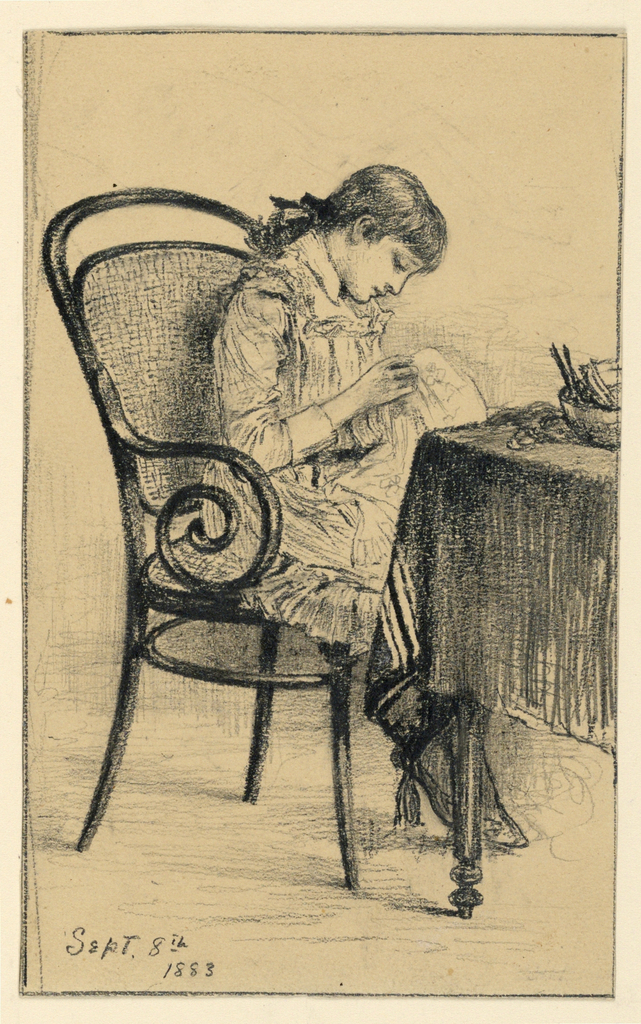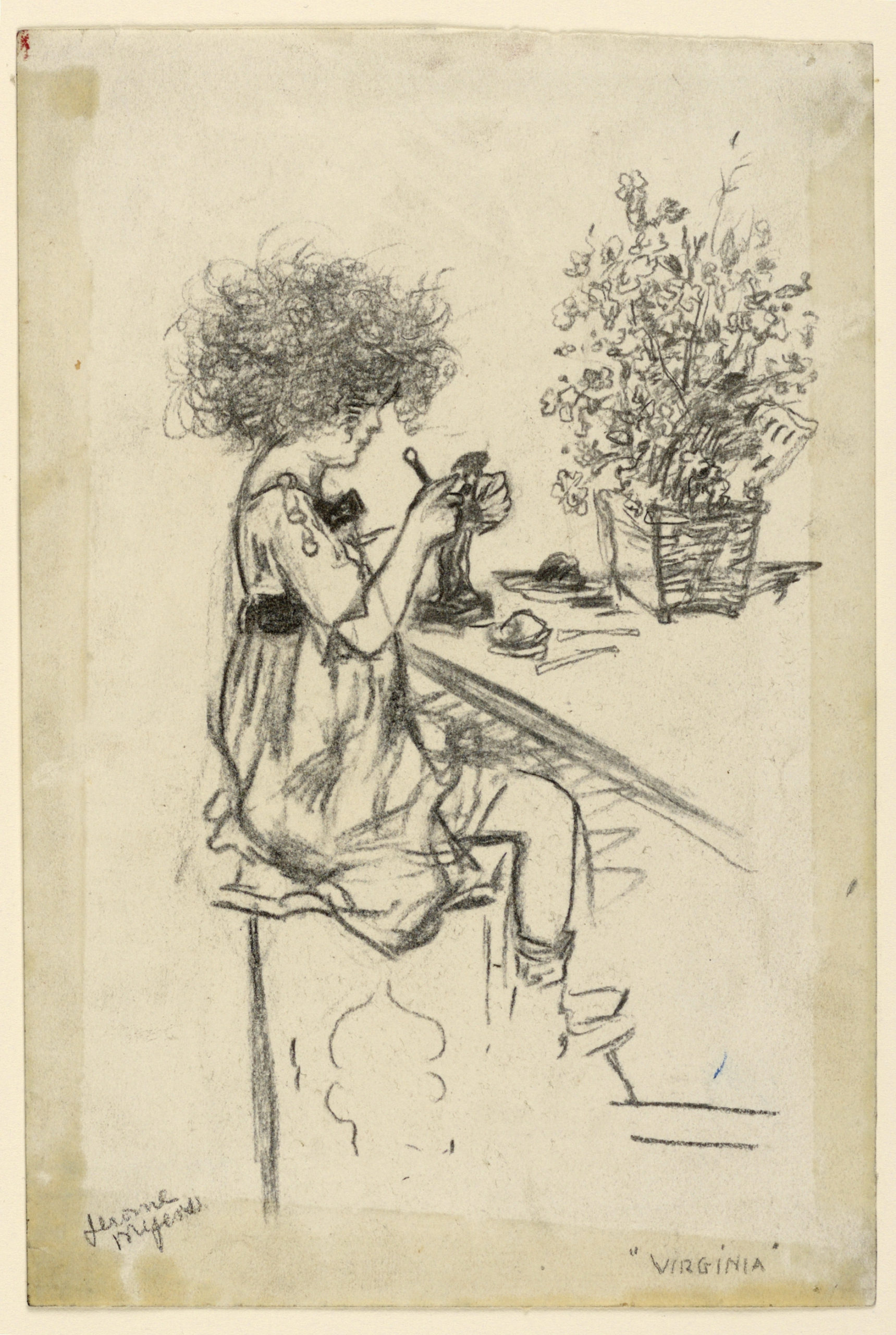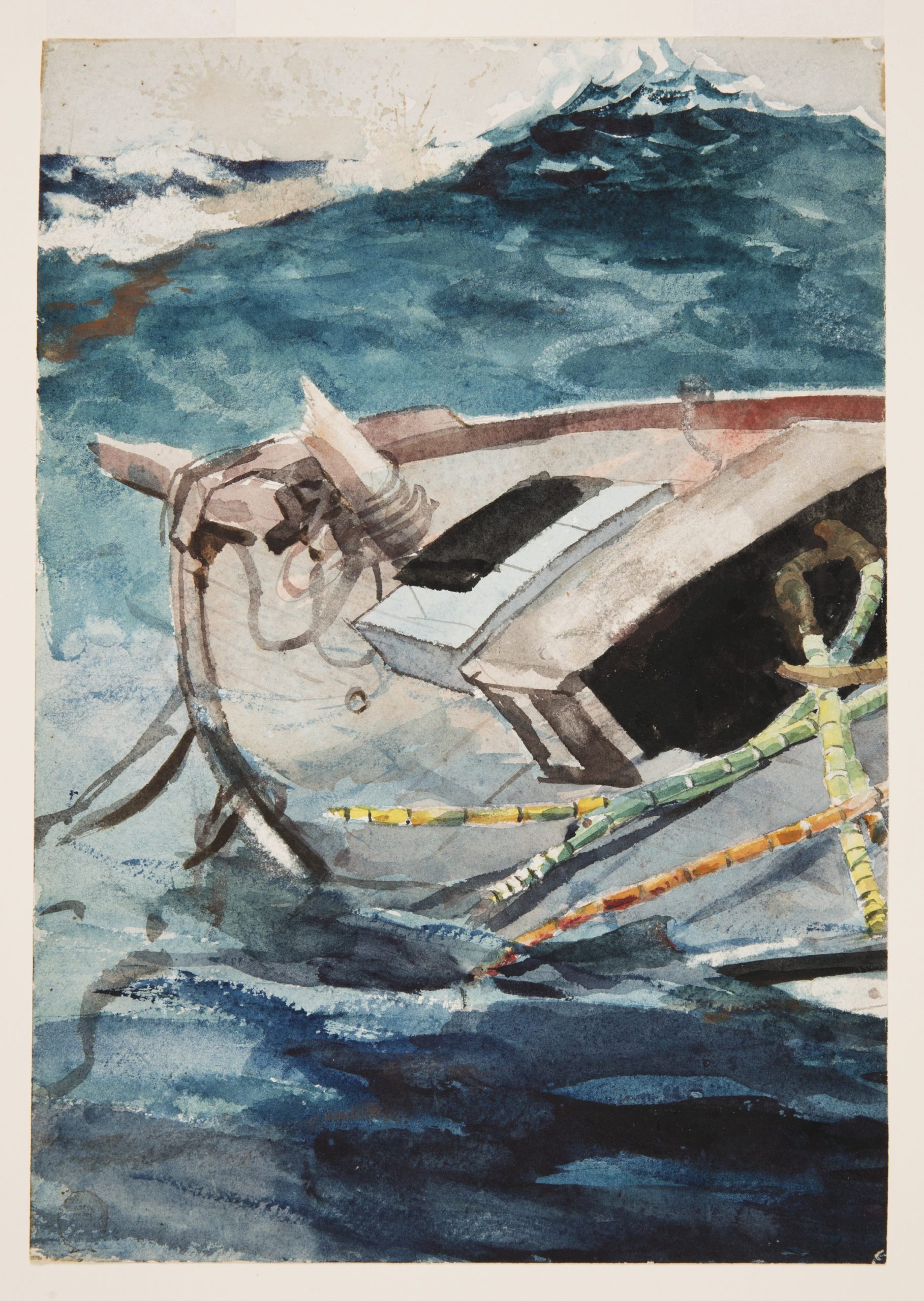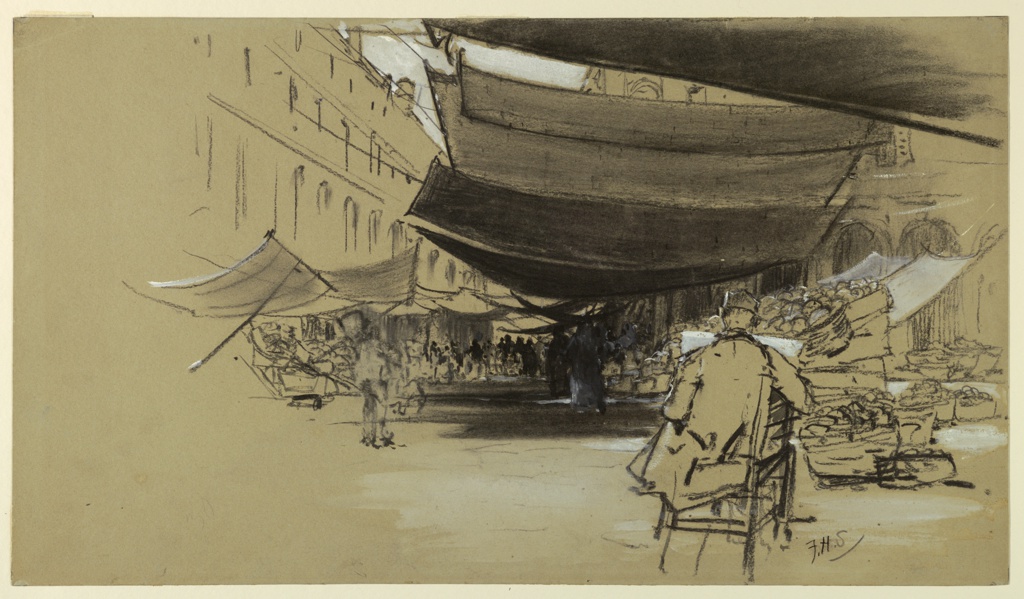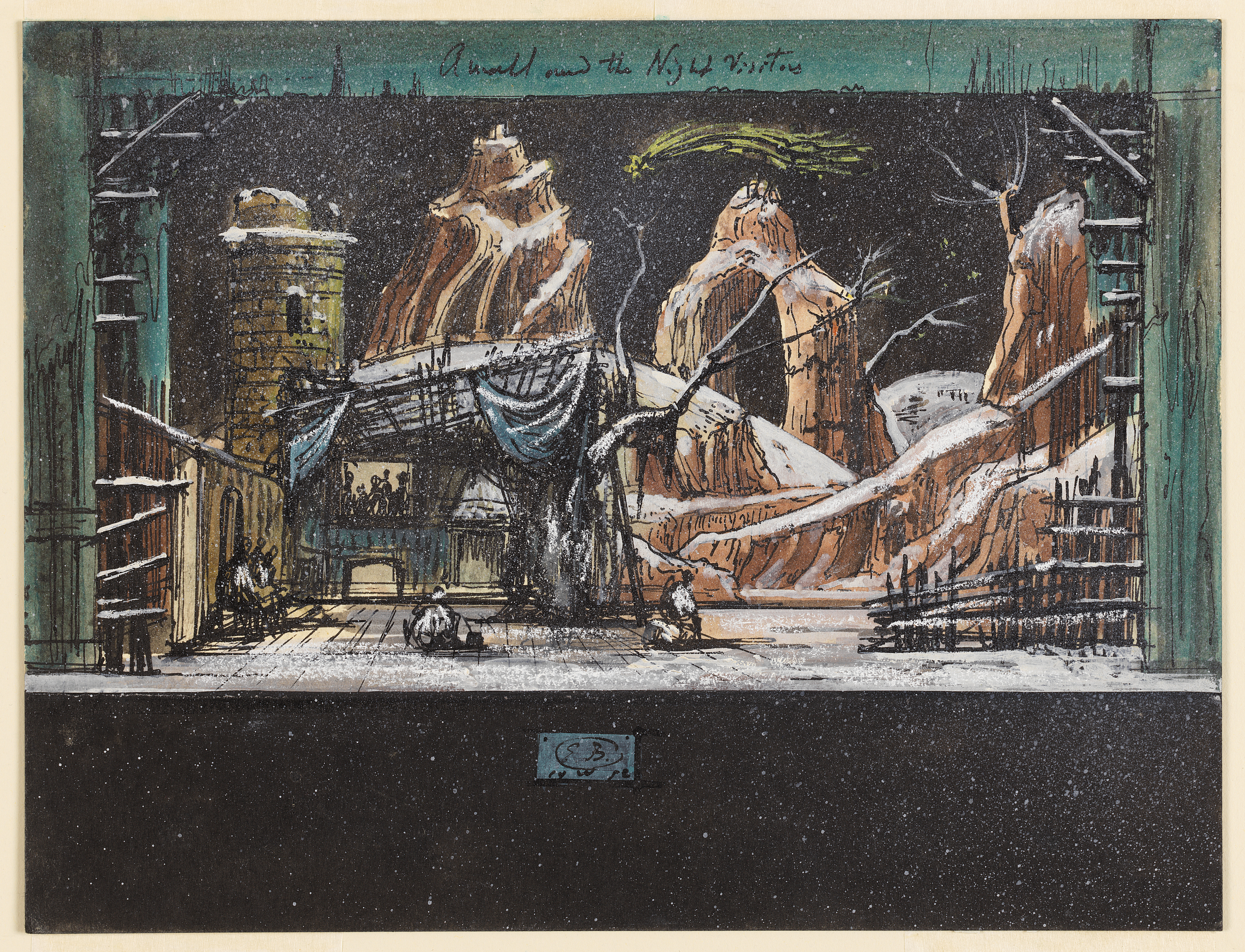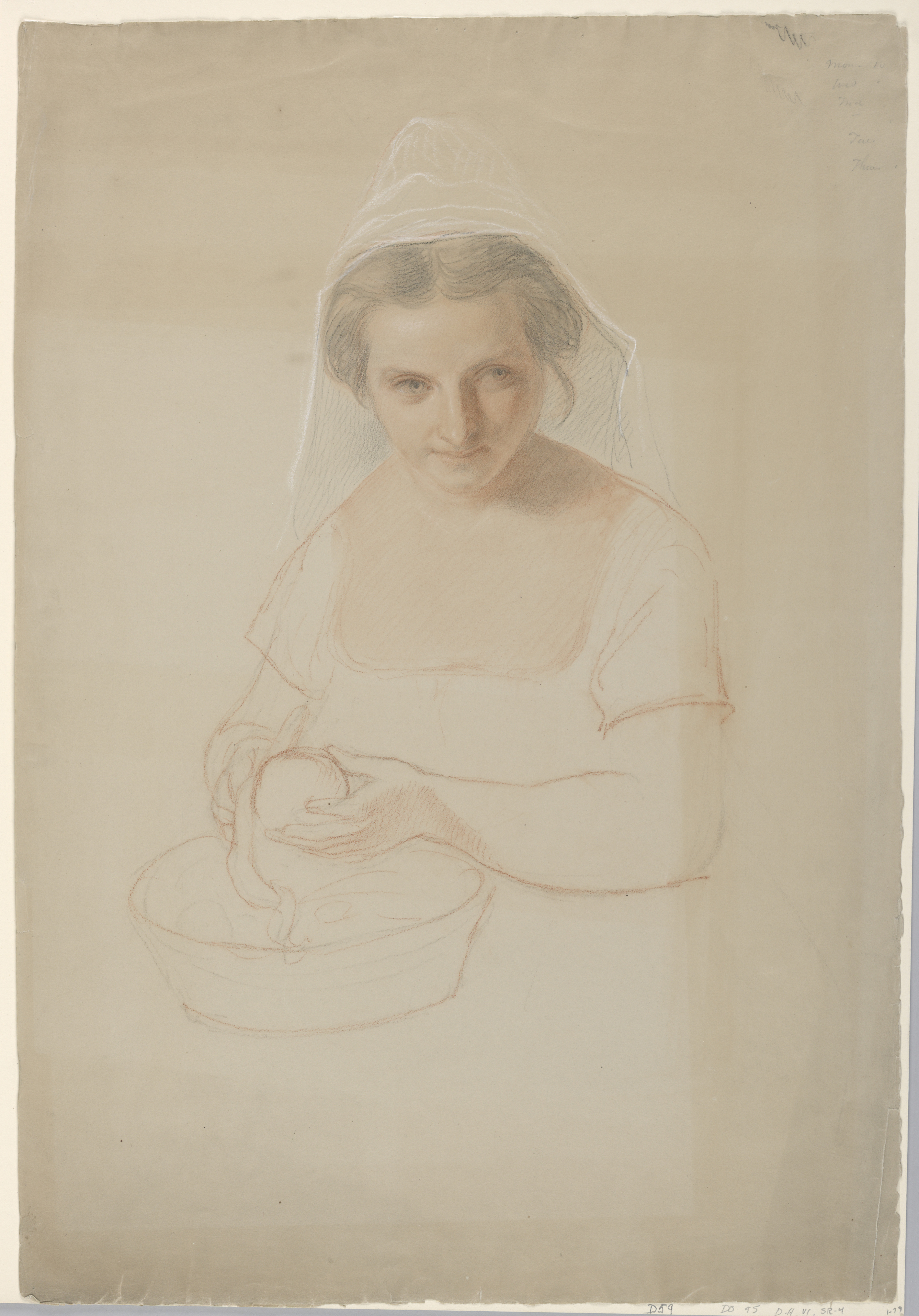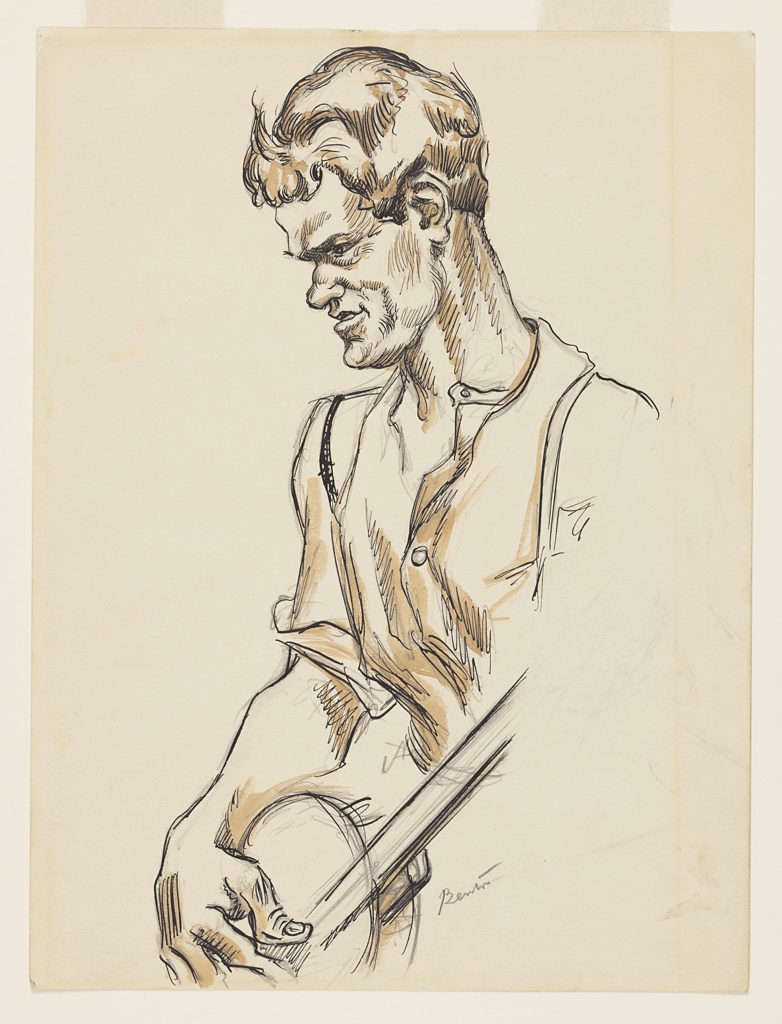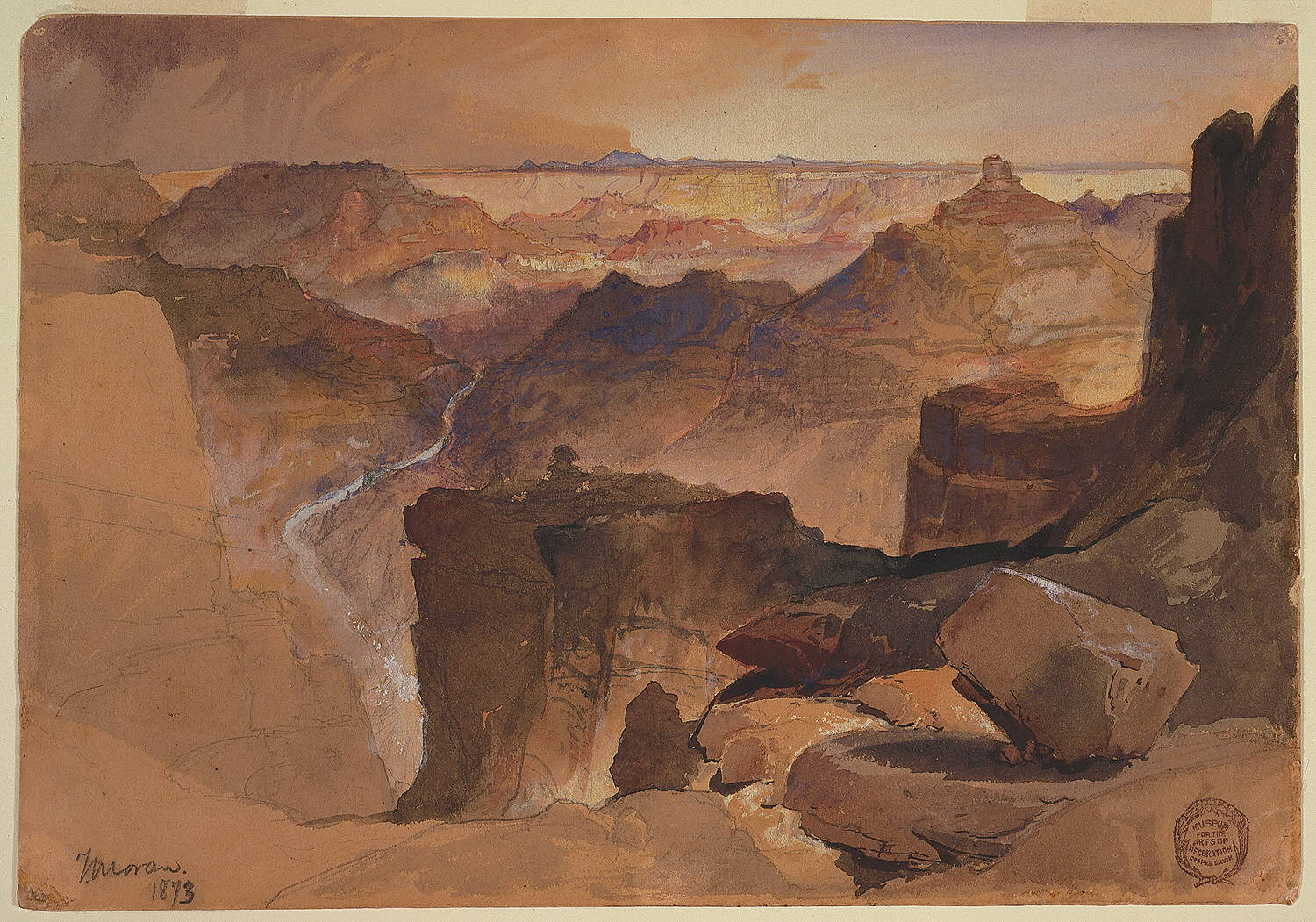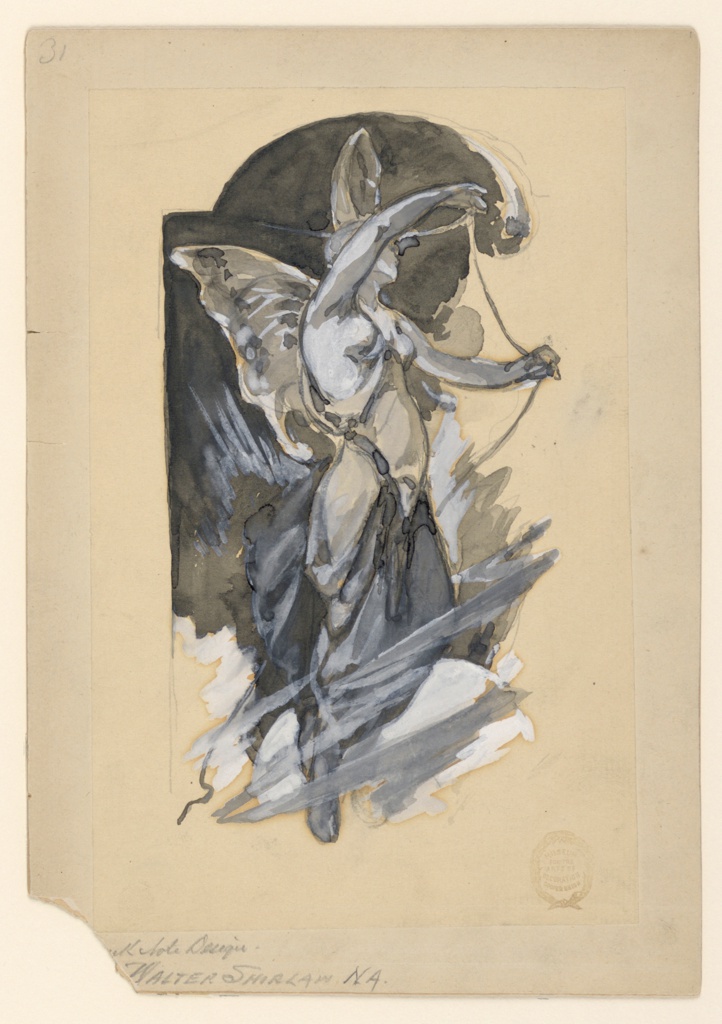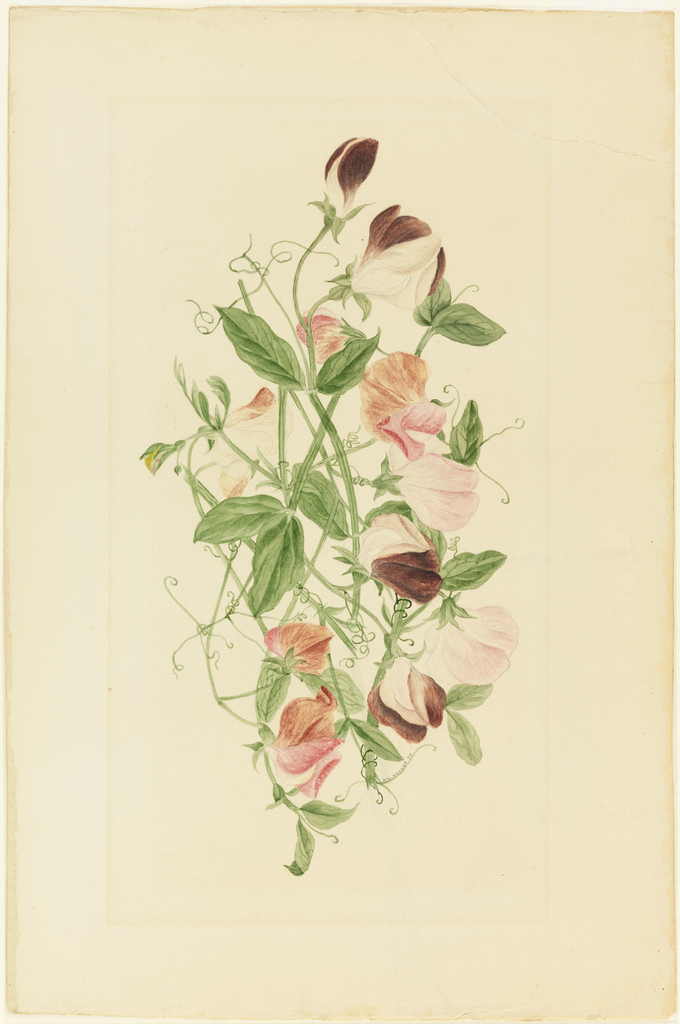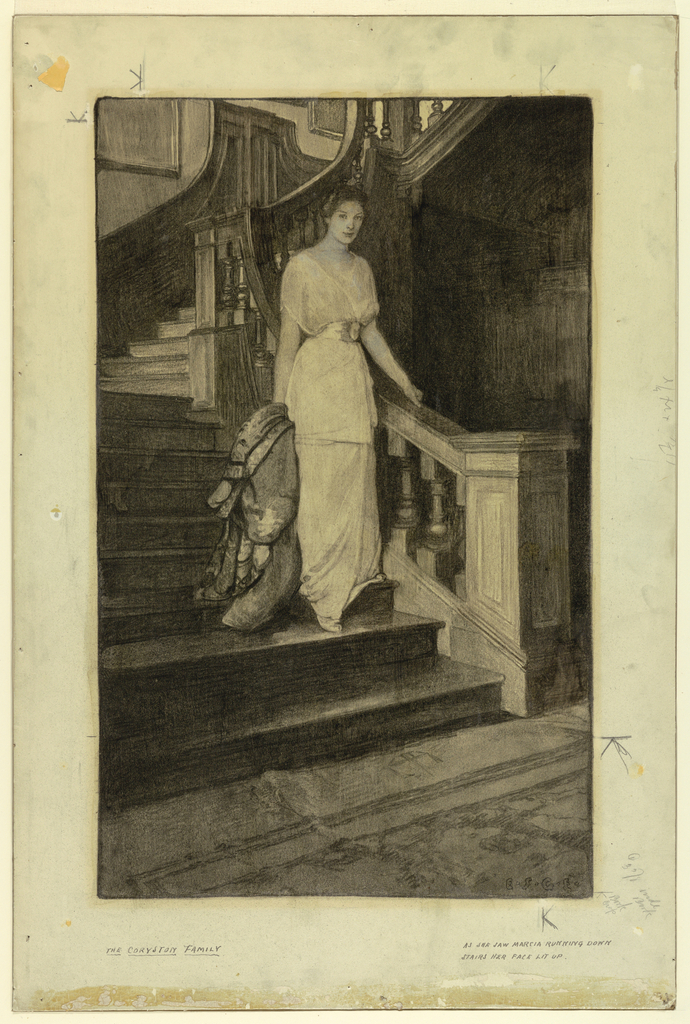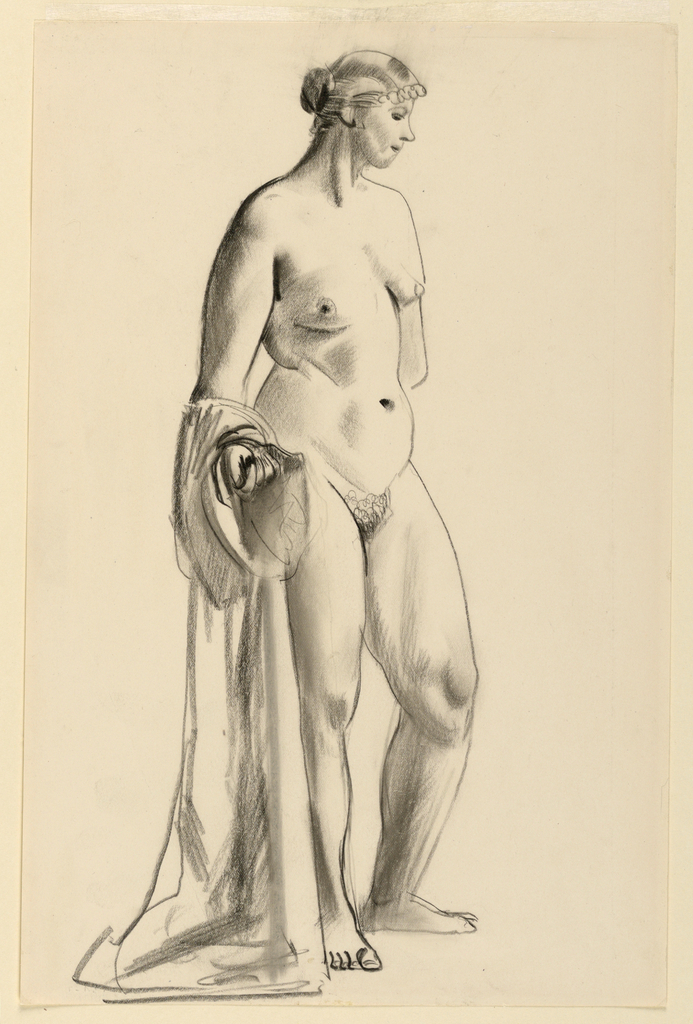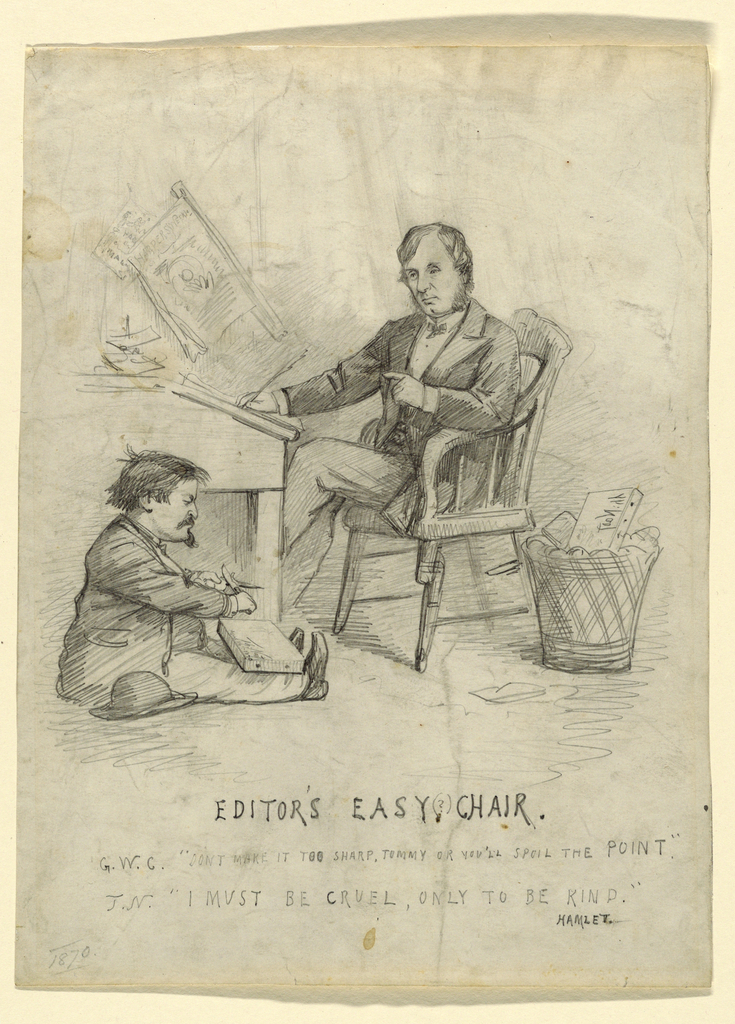Author: Ava Hathaway Hacker By the end of her artistic career, Mary Hallock Foote was one of the most recognized illustrators of life in the American West. Often focusing on images of women and children, her illustrations provided a vision of the West not simply as a rugged frontier but as a place where families...
Jerome Myers always had a sketchbook close at hand. When weather prevented him from sketching city life in New York, he would turn instead to self-portraits or drawings of his family. In this sketch, the artist’s daughter—Virginia—sits at a table, making a small figurine out of clay. Born in Petersburg, Virginia, Myers moved with his...
Author: Laura Fravel Related to his trip to the Bahamas, this watercolor by Winslow Homer is a study for The Gulf Stream, a painting in which a shipwrecked man lies on a battered fishing boat as sharks circle in the water. Focusing on the boat, this watercolor sets the stage for the action of the...
Writer and illustrator Francis Hopkinson Smith did not publish his first work until he was almost 50 years old. Trained as an engineer, he spent the first part of his career in construction and is credited with designing the foundation for the Statue of Liberty. He made charcoal drawings and watercolors throughout his life and...
Amahl and the Night Visitors was the original Hallmark Christmas movie. The one-act opera by Gian Carlo Menotti was the first opera composed for television in the United States. Commissioned by NBC, it was first performed on Christmas Eve in 1951 from a studio in Rockefeller Center. Sponsored by Hallmark, it was also the debut...
Daniel Huntington towered over the New York art world in the nineteenth century, serving as president of the National Academy of Design and the Century Association. He began as a landscape painter working in the style of the Hudson River School, but soon expanded his repertoire to include history painting, portraiture, and literary subjects. Cooper...
A noted teacher whose students included Jackson Pollock, Thomas Hart Benton was at the forefront of the Regionalist art movement, painting scenes of everyday life in the United States. During the Great Depression, he traveled through the South and Midwest and published an autobiography—An Artist in America—recounting his experiences. The book was illustrated with sketches...
This year, the Grand Canyon celebrates its 100th anniversary as a national park. Cooper Hewitt is home to some of the earliest images of the Grand Canyon by Thomas Moran, an artist who accompanied Major John Wesley Powell’s 1873 expedition to survey areas along the Colorado River through Utah and Arizona. This expedition was not...
With her butterfly wings, this artfully draped female figure would seem more at home decorating a theater than ornamenting U.S. currency. Yet the designer, Walter Shirlaw, clearly labeled his drawing “Bank Note Design.” Shirlaw left school at the age of twelve and apprenticed himself to a bank note engraving company, believing that it would help...
Mrs. Henrietta Maria Benson Homer exhibited Sweet Peas at the Brooklyn Art Association in April 1876, asking the relatively modest sum of $20 for the work.[1] In the same show, her son—Winslow Homer—also exhibited work. Henrietta had taught her son the basics of drawing and painting, and helped to spark his interest in watercolor. After...
In celebration of Women’s History Month, March Object of the Day posts highlight women designers in the collection. In a prolific career spanning six decades, Elizabeth Shippen Green (1871—1954) illustrated more than two dozen books and produced hundreds of illustrations for newspapers and magazines. From 1901 until 1924, she worked under exclusive contract to Harper’s...
The Central Park Zoo: home to exotic birds, barking sea lions, and remnants of artist, William Hunt Diederich. Upon the Zoo’s 1934 renovation, Diederich was commissioned to complete a series of iron weathervanes. Today, on the roof of a maintenance facility on the Zoo’s south end, four replicas of those original weathervanes remain. A cat,...
George Bellows (1882–1925) revolutionized the field of graphic arts at the beginning of the twentieth century by pushing the boundaries of lithography. In his own words he strove to “rehabilitate the medium from the stigma of commercialism which has attached to it so strongly.”[1] In 1916 fellow American artist Albert Sterner (1863–1946) introduced Bellows to...
Today discussions concerning the divisive power of political rhetoric are being addressed throughout the national media. This drawing captures a pivotal moment in nineteenth-century American history that juxtaposes a similar debate. Thomas Nast (1840-1902) joined the staff of Harper’s Weekly in 1862 and his drawings of the Civil War established his reputation. George William Curtis...
